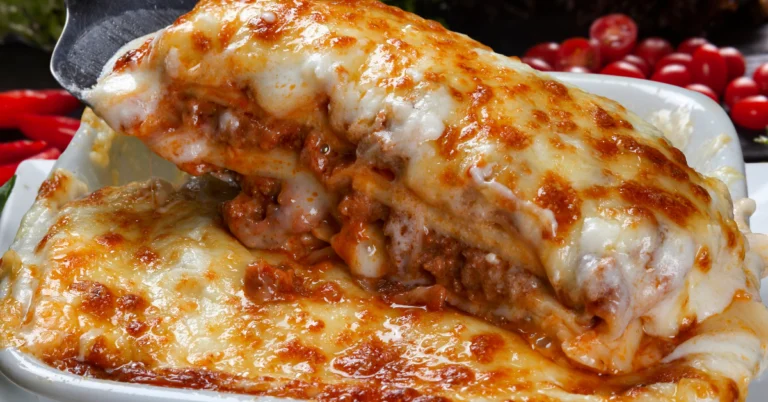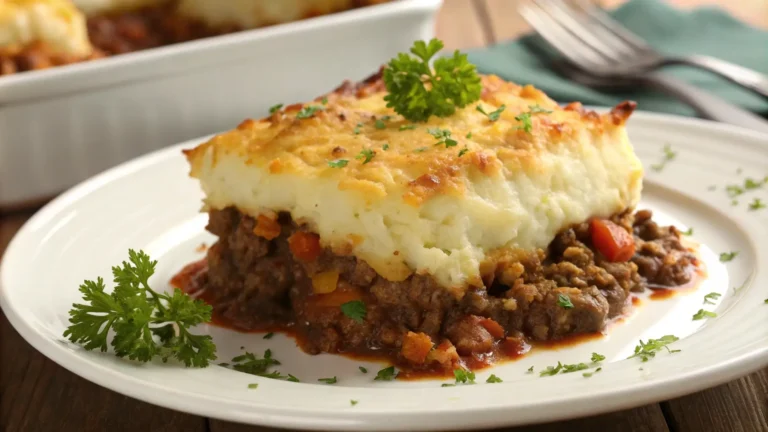What is the Thickening Agent of Cream of Potato Soup?
If you’re like me, there’s nothing quite like a warm bowl of creamy, comforting soup on a chilly day. But when it comes to achieving the perfect consistency, you might find yourself wondering, what is the thickening agent of cream of potato soup? Whether you’re aiming for a velvety, indulgent texture or a lighter, natural thickness, understanding the right thickening methods is key. Let’s break down the secrets to creating the ultimate bowl of cream of potato soup.

What Makes Creamy Potato Soup So Luxuriously Smooth?
Before we dive into the thickening agents, let’s talk about what makes cream of potato soup creamy in the first place. The richness of the soup comes from a combination of ingredients—mainly the potatoes, dairy, and, of course, the thickening agents.
Wondering what to do if your potato soup doesn’t achieve the desired creaminess? Discover common reasons why potato soup might turn out less creamy than expected.
But what is the thickening agent of cream of potato soup exactly? It’s typically a combination of the natural starch in potatoes and some added ingredients that help absorb liquid and create a luscious texture.
1. Potatoes: The Natural Thickening Agent in Potato Soup
The first and most obvious thickening agent in cream of potato soup is… potatoes! Yes, potatoes themselves act as a natural thickener. When you cook potatoes in liquid, the starch they release helps to thicken the soup.
How does it work?
- Potatoes release starch when they cook, which helps to absorb water and thicken the broth.
- If you mash or blend the potatoes in the soup, you can achieve a smooth, creamy consistency.
So, what is the thickening agent of cream of potato soup when you’re relying on the potatoes themselves? It’s that starch! It’s an easy and natural method that doesn’t require any extra ingredients.
2. Heavy Cream and Milk: Elevating Cream of Potato Soup Texture
While dairy products like heavy cream and milk don’t directly thicken the soup, they elevate its texture. For richer recipes, check out this Crockpot Creamy Potato Hamburger Soup to see how dairy blends beautifully with potatoes for a hearty meal.
Why does it work?
- Cream and milk contribute to the overall texture and mouthfeel, making the soup feel indulgent.
- These dairy products blend beautifully with the potato starch, turning a basic potato soup into something that feels luxurious.
For an even thicker consistency, you can substitute some of the milk with half-and-half or use a mix of whole milk and cream. But let’s be real—heavy cream is a game-changer if you want that rich, silky texture.
3. Flour (Roux Method)
Classic techniques like roux or modern gluten-free alternatives like cornstarch and arrowroot are versatile options. If your soup still isn’t creamy, revisit techniques or explore Why Is My Potato Soup Not Creamy?
How do you make a roux?
- Start by melting butter in a pan, then add an equal amount of flour to the melted butter.
- Cook it for a few minutes, stirring constantly, until it becomes a golden paste.
- Slowly whisk the roux into your simmering potato soup base to thicken it up.
A roux works well because the flour helps absorb liquid and thickens as it cooks. The longer you cook the roux, the more it thickens. If you want a thicker soup, you can always adjust the ratio of butter to flour. This method is especially great if you’re looking for a creamy, luxurious texture without adding too much dairy.
4. Cornstarch or Arrowroot Powder
If you’re looking for a gluten-free option, cornstarch is a solid choice. It’s a quick and easy way to thicken cream of potato soup, and it won’t leave your soup with a starchy aftertaste.
How does it work?
- Cornstarch works by absorbing liquid and swelling up when it comes into contact with heat, much like flour does.
- To use cornstarch, you typically mix it with a bit of cold water to create a slurry, then whisk it into your soup during the last few minutes of cooking.
Arrowroot powder works similarly to cornstarch and is another gluten-free option that works especially well in clear soups. If you’re after a smooth, glossy texture, arrowroot can be a great alternative.
5. Creative Uses for Leftover Mashed Potatoes in Soup
If you’re craving an ultra-creamy texture but want to avoid any added flour or cornstarch, leftover mashed potatoes can be the perfect addition. Simply stir them into your soup as it simmers, and they’ll blend seamlessly into the broth.
Why does it work?
- The mashed potatoes already have a creamy texture from the butter, milk, and seasonings you added during preparation, which means you’re not only thickening the soup, but you’re also adding extra flavor and richness.
- This method is especially great if you have some leftover mashed potatoes that you want to use up.
6. Cream Cheese and Sour Cream: Surprising Soup Thickening Agents
This might sound a little unexpected, but cream cheese or sour cream can also be used as thickening agents for cream of potato soup. They bring a slight tanginess to the soup while also adding richness and body.
Why it works:
- Cream cheese helps thicken the soup while giving it a luscious, velvety texture. It also has a nice tang that balances the potato’s starchiness.
- Sour cream adds creaminess while cutting through the heaviness of the potatoes, giving the soup a slightly lighter feel.
7. Pureed Vegetables (Carrots, Leeks, Cauliflower)
Sometimes, you want a healthier way to thicken your soup without compromising on flavor. That’s where pureed vegetables come in. You can add carrots, leeks, cauliflower, or other veggies to your potato soup and blend them for a smooth consistency.
Why it works:
- Vegetables like cauliflower have a neutral flavor and, when pureed, help add bulk to the soup without overpowering the potato flavor.
- Pureed vegetables also bring additional nutrients, making the soup more filling and wholesome.
Other Methods and Tips for Thickening Cream of Potato Soup
1. Reduce the Soup
If you don’t have any thickening agents on hand, you can always try reducing the soup by simmering it for a longer time. This allows the liquid to evaporate and naturally thicken the soup. Just be sure to stir it occasionally to avoid burning.
2. Egg Yolk
For an extra-smooth and creamy texture, some recipes call for egg yolk. Simply whisk an egg yolk with a bit of hot broth, then slowly add it back to the soup. Be careful, though—you don’t want to scramble the egg, so keep the temperature low.
3. Grits or Polenta
Grits or polenta can be a unique but delicious way to thicken potato soup. Just stir them into the soup as it simmers, and they’ll create a thick, creamy texture.
Frequently Asked Questions (FAQs)
1. What’s the easiest way to thicken cream of potato soup?
The easiest way is to use potatoes themselves. When you cook them in the soup and mash or blend them, they release starch, which naturally thickens the broth.
2. Can I thicken my soup without adding flour?
Absolutely! You can use cornstarch, arrowroot, or even mashed potatoes. These options are great for people avoiding gluten or looking for a more natural option.
3. Can I use instant mashed potatoes to thicken my soup?
Yes! Instant mashed potatoes are a quick and easy way to thicken your soup without having to cook fresh potatoes. Just stir them in gradually until the desired thickness is reached.
4. How can I make my potato soup creamier?
To make your soup extra creamy, add heavy cream, cream cheese, or sour cream. These ingredients help to smooth out the texture and add richness to the soup.
5. How can I make my potato soup healthier?
If you want a lighter version of cream of potato soup, try using skim milk instead of heavy cream, or add pureed cauliflower for extra fiber and nutrients.
6. Can I make cream of potato soup ahead of time?
Yes! Potato soup is even better the next day. Just make sure to store it in an airtight container in the fridge. When reheating, you may need to add a little more broth or milk to adjust the consistency.
Conclusion
Now you know the answer to the age-old question: what is the thickening agent of cream of potato soup? From the natural starch in potatoes to clever tricks like using a roux or adding cream cheese, there are plenty of ways to get that perfect creamy consistency. So, next time you make a batch of potato soup, remember that the right thickener is the secret to a bowl of comfort that’ll have everyone coming back for seconds.







One Comment